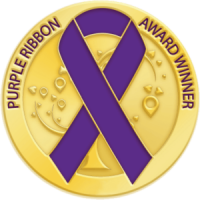What We Do
Court Watch Montgomery advocates for ongoing systemic change for domestic violence survivors through our 3-step court monitoring program.

Step 1
Step 2
Step 3
Monitor & Collect Data
Our volunteers monitor court hearings and collect data on domestic violence cases. All case data is entered into our robust database.

Step 1
Step 2
Step 3
Analyze Data & Report Findings
Our staff analyzes the aggregated data and publishes their findings in reports. These reports are made available to the public on this website and shared with our community, partners, and policy makers.

Step 1
Step 2
Step 3
Advocate for Policy Solutions
Based on our findings, we make recommendations to the county and state and advocate for changes that support victims of domestic violence.
Step 1
Monitor & Collect Data
Our volunteers monitor court hearings and collect data on domestic violence cases. All case data is entered into our robust database.
Step 2
Analyze Data & Report Findings
Our staff analyzes the aggregated data and publishes their findings in reports. These reports are made available to the public on this website and shared with our community, partners, and policy makers.
Step 3
Advocate for Policy Solutions
Based on our findings, we make recommendations to the county and state and advocate for changes that support victims of domestic violence.
Our Latest Report
Guns and Domestic Abusers: Protective Orders and Gun Removal in Montgomery County, Maryland
•
November 6, 2023
Recognizing the extreme danger of guns in domestic violence situations, and the risk to victim safety posed by the Rahimi case, we believe it is timely to report on relevant laws in Maryland and practices in Montgomery County to keep firearms away from domestic abusers through use of civil protective orders. Part I of this report presents an overview of federal and Maryland law governing domestic violence protective orders and firearms, followed by a description of the protective order process in Maryland and procedures used by the Montgomery County Sheriff’s Office to serve orders and remove guns. Data on the number of guns removed from abusers in Montgomery County also are presented. Part II of the report presents findings on the use of gun-related best practices by District Court judges at protective order hearings, based on data collected by Court Watch volunteers and our review of the protective order service process in Montgomery County. Conclusions and recommendations to address these findings are included at the end of the report.
Our Impact
Court Watch Montgomery has improved access to justice for thousands of domestic violence victims in Montgomery County and across Maryland. We won’t stop until all domestic violence victims coming to court are safe, treated with respect, and receive comprehensive legal protections that help stop their abuse.
1
%
more victims with safe waiting areas
0
+
children protected from unsafe visits with abusive parents
0
%
more abusers ordered to turn in their guns
0
+
volunteers monitoring court activities
Victims are safer inside the courthouse.
Our first report showed that in 2011, 99% of domestic violence victims were waiting before and after their hearing in unguarded areas where they were all too often re-traumatized by their abusers. Our report spurred local courts to request more state funds for courthouse security. They succeeded by using our data to prove their point.
Every domestic violence victim seeking a protective order in Montgomery County now has a safe area, guarded by a bailiff, where they can wait before and after their hearing without fear or intimidation or harassment by their abuser.
We will continue to ensure 100% courthouse safety for every domestic violence victim who comes to Montgomery County courts.
More victims are protected when they leave the courthouse.
Without specific safety precautions, domestic violence victims are in real danger as they leave the courthouse after a hearing. Within 48 hours of our 2011 report, all local courts adopted our recommended approach, the use of staggered exits, as court policy. Respondents are held for 15 minutes after the victim leaves the courthouse so that victims are granted safe passage to their transportation. Montgomery County judges and bailiffs dramatically increased their use of staggered exits from 15% in 2011 to 70% in 2012. Today every bailiff in Maryland is trained in how to implement safe exit procedures.
Unfortunately, our 2022 report shows judges and bailiffs are failing to reliably implement staggered exits. According to Court Watch’s latest data, staggered exits were properly executed in only 39% of protective order hearings from May 2021 through May 2022.
We won’t stop until judges stagger every exit by at least 15 minutes, to guarantee domestic violence victims that they won’t be re-abused outside the courthouse when they seek legal protection.
More victims are being granted “no contact” orders.
Virtually all domestic violence victims with children who come to court ask for a “no contact” order that bans the abuser from having any type of contact for one year. Although judges put “no contact” in the protective order, they regularly make a dangerous exception and order victims to have contact with their abuser every other week to exchange their children, without making sure the victim is safe while they do it.
Court Watch provided powerful data in our 2014 report showing the dangers that current visitation practices create for victims and recommending that the county establish a safe visitation center. Within 48 hours of our report, the County Executive launched a task force to consider our recommendations. Court Watch partnered with numerous county leaders and local organizations to build support for the center and to ensure it was adequately funded.
With the opening of the Safe Passage Center in late 2017, every Montgomery County judge now has a secure, family-friendly visitation center that they can order couples to use to make sure that victims are protected from all contact with their abuser.
Since the beginning of 2018, the Safe Passage Center has already saved 46 victims from continued unsafe and traumatic contact with their abuser.
We won’t stop until every domestic violence survivor in Maryland asking for a “no contact” protective order gets one that bans all contact – no exceptions.
More children in families with intimate partner violence are being protected.
When a person abuses their intimate partner in a home with children, there is a 30% to 70% chance that they are also abusing the children. Yet judges in Montgomery County routinely order unsupervised visits with the abusing parent as part of protective orders.
Montgomery County’s first Safe Passage Center, opened in November of 2017, gives judges a powerful tool to make sure that these highly vulnerable children are safe. Already in 2018, judges have protected 66 at-risk children in Montgomery County by ordering that all visits with the abusing parent will be supervised and take place at the Safe Passage Center.
Court Watch’s 2014 report documented the dangers to children during unsupervised visits. County Executive Ike Leggett set up a task force to consider our recommendation for a county safe visitation facility. Court Watch used data and stories from court and local child homicide data to build strong County Executive and County Council support. We pushed for additional funds for security, staff and money to help victims with transportation costs to and from the center.
We won’t stop until Maryland judges assess and ensure every child’s safety.
More judges are ordering abusers to turn in their guns in protective orders.
Today, Montgomery County judges tell 78% of abusers receiving final protective orders to turn in their guns. In 2011, that figure was only 32%. Court Watch data and advocacy made the difference.
In addition, the Maryland Judges’ Domestic Violence Subcommittee has just decided to suggest that all District Court judges in the state use another Court Watch-identified “best practice.” They are now asking District Court judges to ask every victim whether the abuser has access to guns. This information is essential so judges can accurately assess victim danger. Law enforcement can use the information to more quickly get guns out of the wrong hands.
We won’t stop until judges ask all parties if the respondent has access to guns, and tell 100% of respondents given a final order that they must turn in all guns immediately.
Legislation to get guns out of the hands of convicted abusers is now Maryland law.
When someone is convicted of a criminal domestic violence assault in Maryland, they lose the right to buy, possess or own a gun for the rest of their lives. Court Watch’s 2015 report showed that out of 126 convicted abusers who were disqualified from buying or possessing guns, only one abuser was told this important fact by their judge.
We also highlighted the major gap in state criminal code, which lacked any enforcement process to ensure that convicted abusers who owned guns were getting rid of them.
Our report sparked a three-year effort by Maryland legislators and gun violence prevention groups to pass a bill adding enforcement provisions to current gun law. With the supportive efforts in 2018 by Moms Demand Action, the bill passed and was signed into law.
Every judge must now orally tell each convicted abuser that they can no longer buy or possess guns. Courts will share information on convictions more quickly with law enforcement so they can speed up their process of identifying which convicted abusers have guns and make sure they are removed.
We won’t stop until Maryland has an effective system to get guns out of the hands of convicted domestic violence abusers.
The county's Domestic Violence Fatality Review Team has been reinstated.
Detailed reviews of each domestic violence homicide are critical in identifying opportunities to prevent future deaths. In 2015, Court Watch reported on the fact that our county’s Domestic Violence Fatality Review Team had not met in years and had never published a public report.
As a result, Montgomery County has fully re-constituted its Domestic Fatality Review Team and is currently reviewing cases.
Court Watch looks forward to the Team’s first public report, which will give residents, nonprofits, and funders a chance to join county government in tackling systemic flaws or gaps that can lead to domestic violence homicides.
We’ll continue to ensure that every domestic violence homicide and near-homicide is studied thoroughly to identify ways to prevent homicides in the future.
We won’t stop until community residents are embraced as partners in systemic change.
We've brought the community into the courthouse, and opened a dialogue.
Before Court Watch began there had been virtually no reporters or members of the public in local domestic violence courtrooms in decades. Over 150 community members have now observed thousands of civil and criminal cases and brought fresh perspectives and ideas to a system that had been very closed.
Many judges continue to welcome feedback from Court Watch, saying they find the information valuable and interesting. Our reports are shared by the county District Courts with all new judges and are sent by Maryland’s Administrative Office of the Courts to every District Court judge in the state.
Court Watch has also initiated joint discussions between judges and important community programs, such as the child witness counseling program and the offender intervention project so that judges build a better understanding of how such programs can be incorporated into protective orders to enhance their effectiveness.
Our work has created broader dialogue and involvement as well. Court Watch reports have been covered extensively by the Washington Post, whose editorial page has supported our recommendations for change seven times in seven years. In November 2017, the Baltimore Sun featured Court Watch Montgomery in a front-page investigative story on the lack of judicial accountability in Maryland.
We won’t stop until communities are active in, and knowledgeable about our courts and our courts are knowledgeable about their communities.
Awards & Accomplishments
2023
Purple Ribbon Award Winner - Annual or Impact Reports of the Year
Presented by Theresa's Fund and DomesticShelters.org
2019
Anna Julia Cooper Award for the Application of Social Science in Community Service
2017
Safe Passage Center opens!
The County’s new Safe Passage Center is a “family-friendly” and safe access site for families with a Montgomery County Court Order for shared custody and child visitation. The Center’s goal is to provide children safe options to be in contact with both parents regardless of the family situation or parental conflict.
2017
The Governor’s Service Award
2017
Montgomery Serves Volunteer Award
2015
Community Partnership Award, Family Justice Center
2014
Civic Momentum Award, IMPACT Silver Spring
2014
County Council of Montgomery County Proclamation Recipient
2013
Governor’s Citation for Victim Services
2012
Community Safety Award, Partnership for a Safer Maryland
2012
County Council of Montgomery County Proclamation Recipient
2011
Community Award, Maryland Network Against Domestic Violence
Ways To Help
There are several ways to show your support for our cause. No contribution is too small.
Connect With Us







